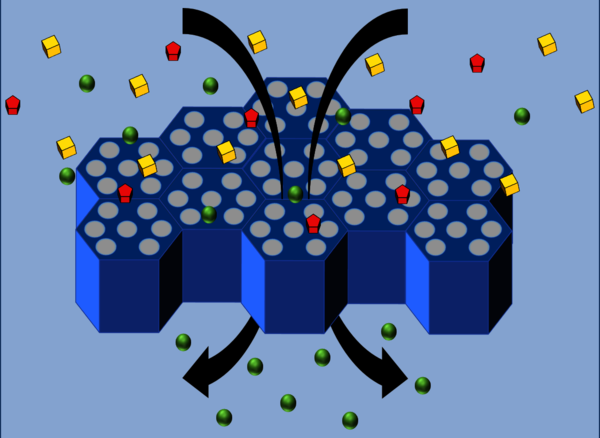Liquid crystalline polymer membranes for gas separation
On December 14, 2022 Joey Kloos successfully defended his PhD thesis entitled 'Liquid crystalline polymer membranes for gas separation

The tremendous increase of greenhouse gas emissions such as carbon dioxide (CO2) and methane (CH4) from the incineration of fossil fuels for large-scale energy production and industrial activities results in great challenges for the sustainable development of our modern society. Valuable gas sources such as natural gas and biogas, or waste streams like flue gases contain large amounts of greenhouse gases. Separations such as CO2/CH4 and CO2/N2 are therefore crucial to minimize or even prevent emissions into the atmosphere. The most used methods to separate gases include cryogenic distillation, amine absorption, pressure swing adsorption and membrane separations. Of these, membrane technology gained in the last decades a key role because of its low operating costs and high energy efficiency compared to the other separation technologies. Despite that polymeric membranes are often used for gas separations, most of the used polymers are not highly ordered at a molecular level. This results in a trade-off between gas permeability and selectivity, which limits the performance of current membranes for gas separation. Controlling the membrane-building blocks at a molecular level is a tool to improve membrane performance.

Self-assembly of liquid crystalline (LC) polymeric materials provides control over the molecular organization and orientation of the membrane-building blocks at the molecular level. A variety of ordered nanostructures can be obtained, which, depending on the fabrication process, can differ in molecular order and orientation. Subsequent cross-linking of the LC monomers fixates the nanostructures and results in robust nanostructured membranes. Although these highly ordered membranes have already been investigated for water separations, the materials are also interesting for gas separation applications.
Therefore this PhD work investigated the structure-property relationships of these nanostructured membranes for gas separation applications. LC Membranes were fabricated with various nanostructures, which differ in type and degree of molecular order and orientation, and their gas separation performances were evaluated. The most important finding of this work is that the self-assembly properties of these molecules can be used to control the gas separation performances of LC membranes. The easiest way to achieve this is by changing the molecular order and/or orientation of the nanostructures by adjusting the process temperature during the fabrication process. However, more subtle order differences can also be used to tailor the performances of the membranes. For example, equipping the molecules with functional groups that improve the gas solubility and diffusion for some gasses can be used to control the performances of the membranes. This research shows the opportunities and added value of using these highly ordered materials. However, given the many unique properties of LCs and their infancy in the field of gas separation, there is still a lot to explore regarding what these highly ordered materials can do in this field.
Joey Kloos defended his thesis ‘Liquid crystalline polymer membranes for gas separation’ on Wednesday, December 14th, 2022. He was supervised by prof.dr.ir. Kitty Nijmeijer and dr.ing. Zandrie Borneman.